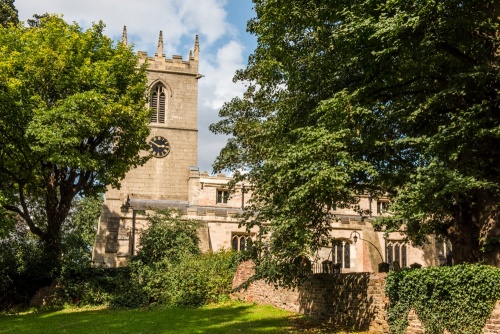
The medieval parish church of St Andrew stands on a high point of ground overlooking the Lincolnshire town of Epworth. There is a reason the church was built on high ground; until the fens were drained in the 17th century this area barely rose above the level of the surrounding marshes. Epworth formed part of the Isle of Axholme, which was, literally, an island in the surrounding marshes. The townsfolk chose the highest spot on the island to build their church.
There has been a church in Epworth since the Saxon period. That original Saxon building occupied the space where the nave and the western end of the chancel now stand. That early church was rebuilt in the 12th century.
The oldest part of the present building is the nave arcades, dating from 1190-1270. Unusually, the arcades were not simply cut into the existing exterior walls but were built as new from the ground up. The aisles were finished in the late 13th century.
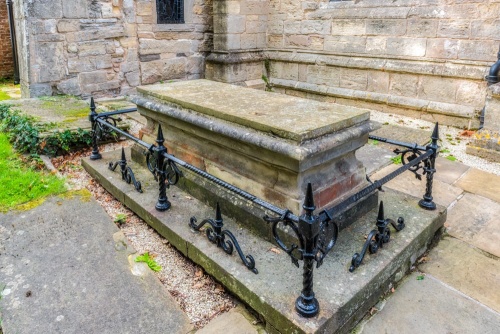
In the following century, the chancel was extended eastward and a chantry built for the family of Lord Mowbray, who gave money for three priests to say mass for the souls of his family. The chantry was torn down in the 17th century.
The west tower was added in the 15th century and clerestory windows inserted in the Tudor period.
In 1844 over 50 alabaster sculptures of angels and saints were discovered. They were probably hidden during the Reformation to avoid them being destroyed. The church was comprehensively restored in 1868 when the organ loft was added.
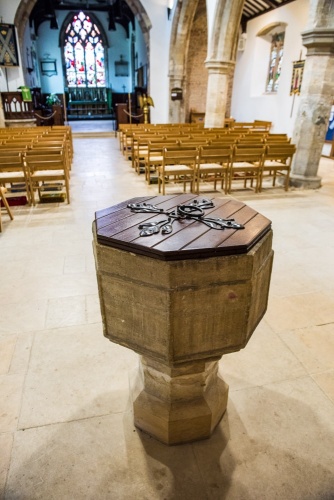
John Wesley was baptised
The Wesley Family
The first record of a rector for St Andrew's Church comes from 1233, but the most famous rector by far was Samuel Wesley, who held the post for 40 years, from 1695 until his death in 1735. Samuel Wesley was not, perhaps, the best appointment to the post of rector. He was an outsider, a Tory, an educated man, and a strict moralist. He had very little in common with is parishioners and they let him know it.
Samuel Wesley lived in the thatched rectory with his wife Susanna and their large family. One of his sons was John Wesley, who would grow up to found the Methodist Church. In 1709 the thatched rectory caught fire and burned to the ground.
It was almost a tragic fire, for John Wesley, then aged six, was dramatically rescued from the flames just before the house collapsed. It seems entirely likely, given Samuel Wesley's unpopularity, that the fire was deliberately set.
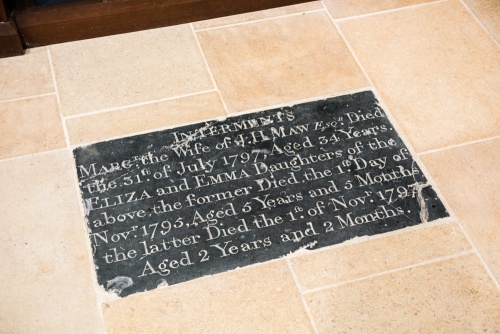
Samuel Wesley was not deterred, and he set himself to rebuilding the rectory in style. The result is the Old Rectory, a short distance from the church. The Old Rectory was John Wesley's childhood home and is now a fascinating museum covering his life and times.
The Wesley Tomb
One of the most famous events in the history of the Methodist church took place in 1742 outside St Andrew's Church. John Wesley, now an ordained minister, was banned from preaching inside the church because of his radical views.
Instead, he preached from a perch on top of his father's table tomb outside the priest's door to the church. Under the law, the tomb was his family's possession, so he was, technically, on his own property when standing on his father's tomb.
A large crowd gathered to hear him preach, and the event has been immortalised in several paintings over the years. So many visitors have tried to recreate the scene by standing on top of John Wesley's tomb that the church has had to put a railing around it.
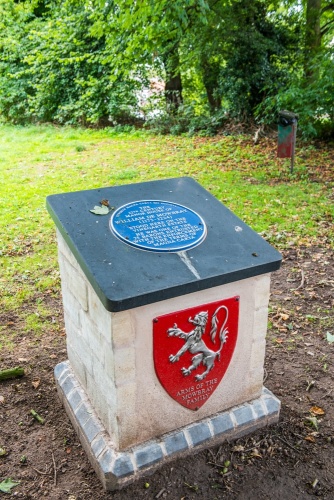
Vinegarth
Just outside the churchyard is a large field known as Vinegarth. This was the site of the Mowbray family's medieval manor house. William de Mowbray was one of the English barons who forced King John to sign the Magna Carta in 1215. During excavations on the site of the manor house floor tiles bearing the Mowbray symbol of a lion were discovered.
What to See
At the west end of the nave is the medieval font. This is where John Wesley and his siblings were christened.
In the north porch are two coats of arms. One is to the Mowbray family, lords of the manor throughout the medieval period, and the other is the arms of the Bray family.
At the east end of the north aisle is a memorial to Thomas Cutforth, a notorious 18th-century highwayman, Cutforth was a not the romantic ideal of a highwayman; he did not rob from the rich but from farmers returning from market. He was hanged in Lincoln in 1720. Near the Cutforth memorial is a 15th-century parish chest.
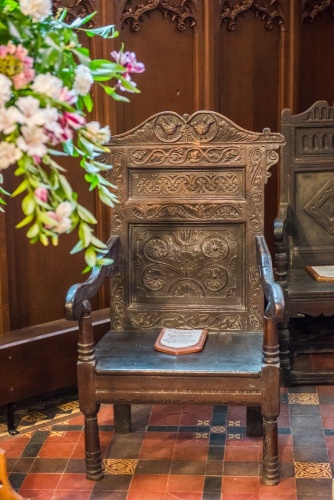
In the sanctuary is a Tudor chair, carved with the date 1560. Beside it is Susanna Wesley's chair, a gift from Susanna to the church after her husband Samuel was named rector in 1695.
One piece of historical significance is easy to miss. Built into the outer wall of the nave near the south porch are two pieces of carved stone thought to have formed part of a medieval grave slab. One piece shows the handle of a Crusader's sword.
Getting There
St Andrew's Church is in the north-east corner of the village. It is easy to reach from the main visitor parking area in the town centre. The church is normally open to visitors for two hours in the afternoon, from March through October, and is easy to reach from any point in the town centre. It is no more than a 5-minute walk from the church to the Old Rectory.
While in St Andrew's Church be sure to pick up a leaflet covering the Epworth town trail, taking in the major points of interest around Epworth, including historical sites linked to John Wesley.
About Epworth, St Andrew's Church
Address: Church Street,
Epworth,
Lincolnshire,
England, DN9 1ES
Attraction Type: Historic Church
Location: On Church Street, just off High Street. Easy access from the town centre parking areas.
Website: Epworth, St Andrew's Church
Location
map
OS: SE783040
Photo Credit: David Ross and Britain Express
POPULAR POSTS
HERITAGE
 We've 'tagged' this attraction information to help you find related historic attractions and learn more about major time periods mentioned.
We've 'tagged' this attraction information to help you find related historic attractions and learn more about major time periods mentioned.
Find other attractions tagged with:
John Wesley (Person) -
NEARBY HISTORIC ATTRACTIONS
Heritage Rated from 1- 5 (low to exceptional) on historic interest
Wesley Memorial Methodist Church - 0.2 miles (Historic Church) ![]()
Epworth Old Recory - 0.3 miles (Historic Church) ![]()
Burringham, St John's Church - 4.7 miles (Historic Church) ![]()
Gainsborough, All Saints - 8.8 miles (Historic Church) ![]()
Gainsborough Old Hall - 9.2 miles (Historic House) ![]()
Saundby, St Martin's Church - 9.9 miles (Historic Church) ![]()
Normanby Hall - 10.1 miles (Historic House) ![]()
Mattersey Priory - 10.2 miles (Abbey) ![]()
Nearest Holiday Cottages to Epworth, St Andrew's Church:
Misterton, Nottinghamshire
Sleeps: 4
Stay from: £489 - 2295
More self catering near Epworth, St Andrew's Church



